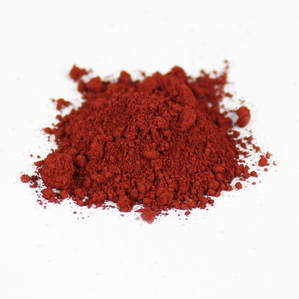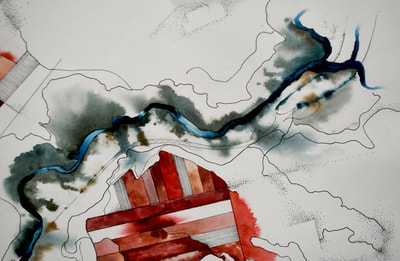|
I enjoyed listening to CBC's the Current this morning, where origins and discoveries of colour pigments were discussed. Show Site: http://www.cbc.ca/thecurrent From Oak Galls to rocks and soil, many natural elements are available in our environment. There are so many paints and dyes which are chemically mass-manufactured and often transported over long distance to reach our stores. Many of these dyes and chemicals make their way into our rivers. Also, natural pigments are better than synthetic dyes. The natural dyes are better products, simply because they do not contain chemicals harmful to health (therefore healthier and more reliable than chemical synthetic dyes). Looking back, 19th century natural tanneries had many lovely colourful dyes, yet in Toronto, the organic waste was mismanaged. As tanneries, breweries, and other industries multiplied along the lower (Don) river in the latter half of the nineteenth century, the river's ability to assimilate these wastes would have been seriously compromised. Sewage and industrial pollution undoubtedly had serious consequences for riverine ecology. -Making an Industrial Margin, Reclaiming the Don, Jennifer Bonnell, We could keep our focus as consumers and creators, that natural colors always offer contrasting shades and ranges of hues are impossible to achieve with artificial colourings. The vegetable dyes represent a sustainable source with respect to their synthetic counterparts, they are a renewable resource while the synthetic dyes come from oil.  http://www.jasonslogan.com/thetorontoinkcompany/ http://www.jasonslogan.com/thetorontoinkcompany/ Great to have the Current share Jason Logan's perspective and insight on natural inks( Toronto Ink Company). I discovered how natural dyes can be extremely exciting and vivid last summer, when my two boys spent hours crushing oak galls by laying them on the street and waiting for cars to crush them, then smearing their hands in the natural dyes and creating delightful sidewalk art.
0 Comments
I wanted to share one of my pieces in which I looked at the various scales of parcels of land, built wood and brick buildings, and the swelling and flooding of the Don River. The piece is part of the Don River + Toronto series in which I could not overlook the long standing history of flooding along the lower Don. I am looking forward to exhibiting all seven pieces together in the near future. Don Valley Parkway flooding. Here's why it happens so often, Scott Sutherland Meteorologist/Science Writer It was Hurricane Hazel, which blasted across Toronto in 1954, that served as an effective wake-up call for the disaster potential that still existed in the valley. River flows during the storm have been estimated at around 1,700 cubic metres per second, which is over 400 times greater than the normal average flow the river experiences. There hasn't been anything quite that bad since, but the government did ban development in the valley (as well as other flood plains) as a result of that disaster. Still, less than four years later, in 1958, construction crews broke ground on the newly approved Don Valley Parkway, which was going to wind its way right through the middle of the Don River's flood plain, and the city continued to grow around it, laying down even more concrete and asphalt up and down the lands that border both sides of the river valley. Great stories and accounts of Torontonians displaced and rescued can be found in the Canadian archives. All of the accounts, along with images and descriptions in Jennifer Bonnell's Reclaiming the Don: An Environmental History of Toronto's Don River Valley, had me draft and paint this piece, which plays a key role in the Don's recent story. FUTURE PLANS Lower Don River West Remedial Flood Protection Project describes in detail the flood protection systems, and their environmental effects, for the elimination of the flood risk of the Lower Don River. Full report found here. |
about the authorThe blog connects thoughts on Landscape and Architecture, design, and mostly the connections between landscape architecture, art and our beautiful Toronto. archives
February 2022
|









